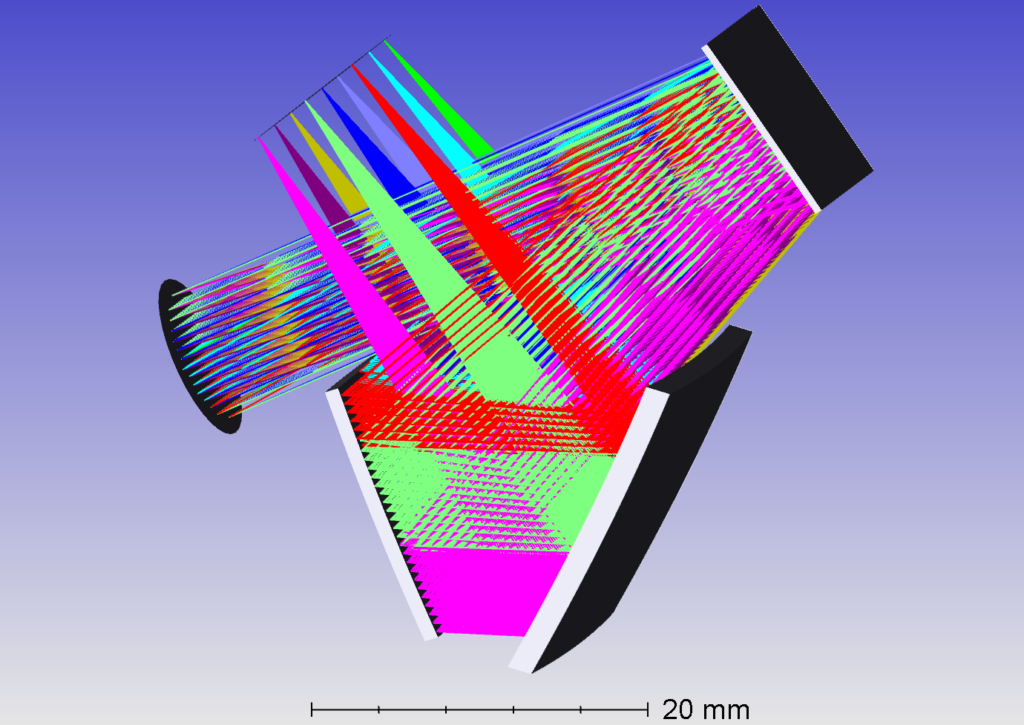Here’s a design example of a compact telescope, most suitable for use in the UV-VIS, NIR, and SWIR spectral bands. It’s F/4, diffraction-limited, with a field of view of +/- 1 deg. For this example, I started with a reference design based on confocal symmetry and reoptimized it with aspherics to double the field of view.

For the next variation, I placed the stop between the tertiary mirror and the image plane. This layout can accommodate a cold stop, which is often needed in the MWIR and LWIR. This design has the same aperture and field of view as above and is also diffraction-limited, but note that it is a bit larger.

I created the compact imaging telescope below as an example of my freeform design capability.
